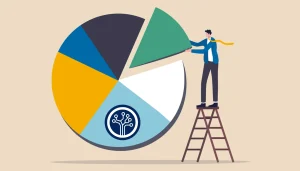Inflation is what everyone is talking about and that’s not surprising, given it’s very high pretty much everywhere and it’s the one thing we all experience every day: when we buy groceries, fill up our cars, go out for dinner or pay our bills. But will it stay high for much longer?
The inflation genie is out of the bottle
No one has ever written a fascinating and captivating article about inflation…so if you are going to stop reading now, let the next two statements be the ones you retain.
“Once the inflation genie is out of the bottle, it can take far longer for inflation to come back to normal levels than most people realize” (Omid Shakernia, Head of Research at Research Affiliates).
“An inflation jump to 4% is often temporary, but when inflation crosses 8% it proceeds to higher levels over 70% of the time” (Research Affiliates, based on 53 years of data from 14 developed economies).
These statements do not mean to imply that inflation won’t recede to 2% or thereabout in the short term (which is what seems to be the most widespread expectation at the moment). They only mean that a quick retreat to low inflation is not a very likely scenario. It can happen, but it cannot be our central expectation. If inflation is between 6% and 8%, the overall median time to revert to 2% is 10 to 13 years (Research Affiliates, based on the same 53 years of data from the same 14 developed economies).
Inflationary forces
It’s generally accepted that central banks (certainly the Fed) woke up too late to an inflation rate that in America was already above 5% in June 2021 (and at the time, the vast majority of Fed votes still thought fed funds should have stayed near zero by the end of the following year), and if Covid ignited the inflation trend (disrupting supply chains and pushing governments to hand out free cash), the Russia-Ukraine war gave it further momentum.
And ongoing inflationary forces do not seem to be fading away any time soon: de-globalization is accelerating, to address supply chain frictions (and the more of our stuff is done at home, the higher the prices will be) and the labor market is still very tight. Financial conditions are also tightening, and while this will eventually lead to an economic slowdown and to lower prices, “eventually” is not quite now yet and central banks are very much constrained in raising rates further, after having raised them too fast. This dilemma raises the risk of a possible stagflation, i.e. economic stagnation with high inflation. Not exactly a nice place to be.
If you have managed to read this far, you probably won’t be thrilled (or surprised). But if in the 2010s all one had to do to make money was to invest in a general index (or Bitcoin), it is still possible to make money in an inflationary environment, although one has to be more discerning. We, at Exirio are not financial advisors so we don’t recommend investing in any asset class in particular but, generally speaking, asset classes that are slightly less prevalent in investors’ portfolios (commodities, REITS and TIPS) have, historically, performed well in inflationary periods.
The past only offers guidance, not certainty
There is a caveat to everything said so far. “If history is of any guidance” is a disclaimer needed here and at the beginning of any discussion that relies on historical data to attempt at any prediction about future events. As we discussed in our last blog post, one major underlying difference between the macroeconomic environment now and those the historical data mentioned above are derived from, is demographics: the world we live in is in the middle of a demographic crisis, characterized by declining birth rates and an aging population, and we are likely to start experiencing the consequences in the coming years and decades. That wasn’t the case in the past 50 years.
Similarly, the globalization that began after the second world war and accelerated with the end of the cold war is showing clear signs of a possible reversal, and the implications are wide and complex. But one of them is clear: the future may not quite look like the past.
In any market environment, but even more so in the current one, diligence and research must be the pillars on which to build an investment strategy. There are so many tools available to investors to help them in their journey, and Exirio is one of them – a comprehensive tool to track all investments in one place, with all the key return metrics available for analysis and comparison.
Try our demo or register a new account



